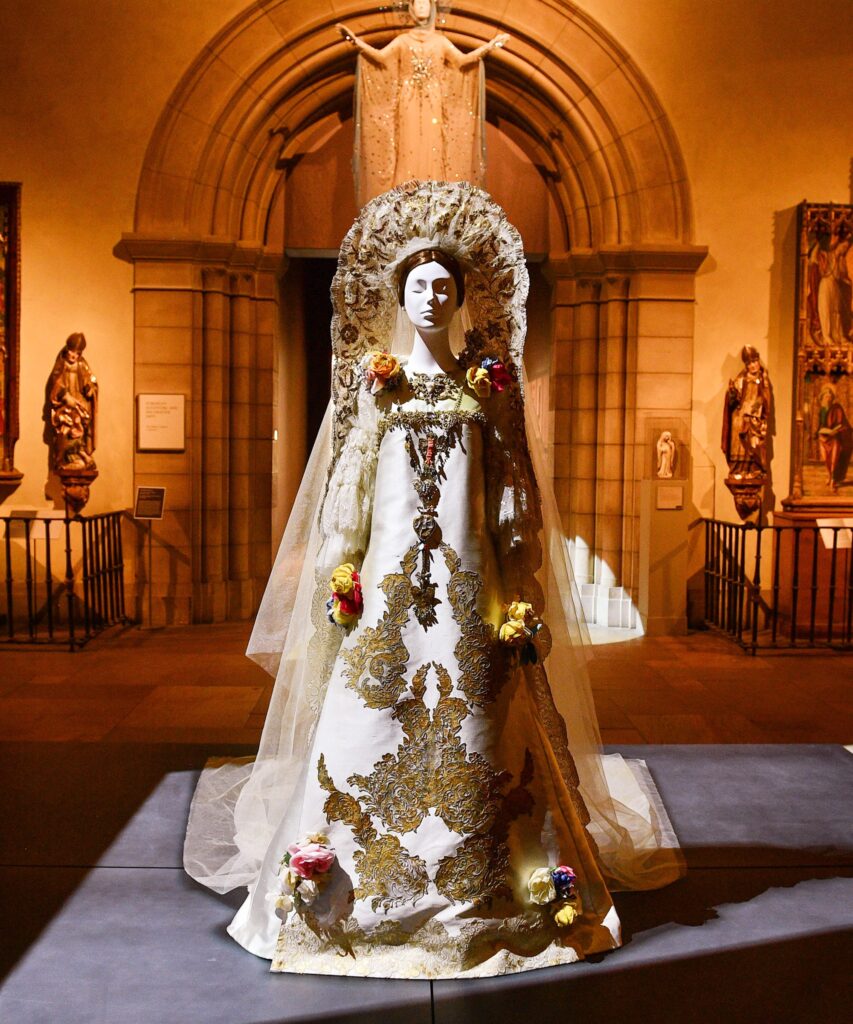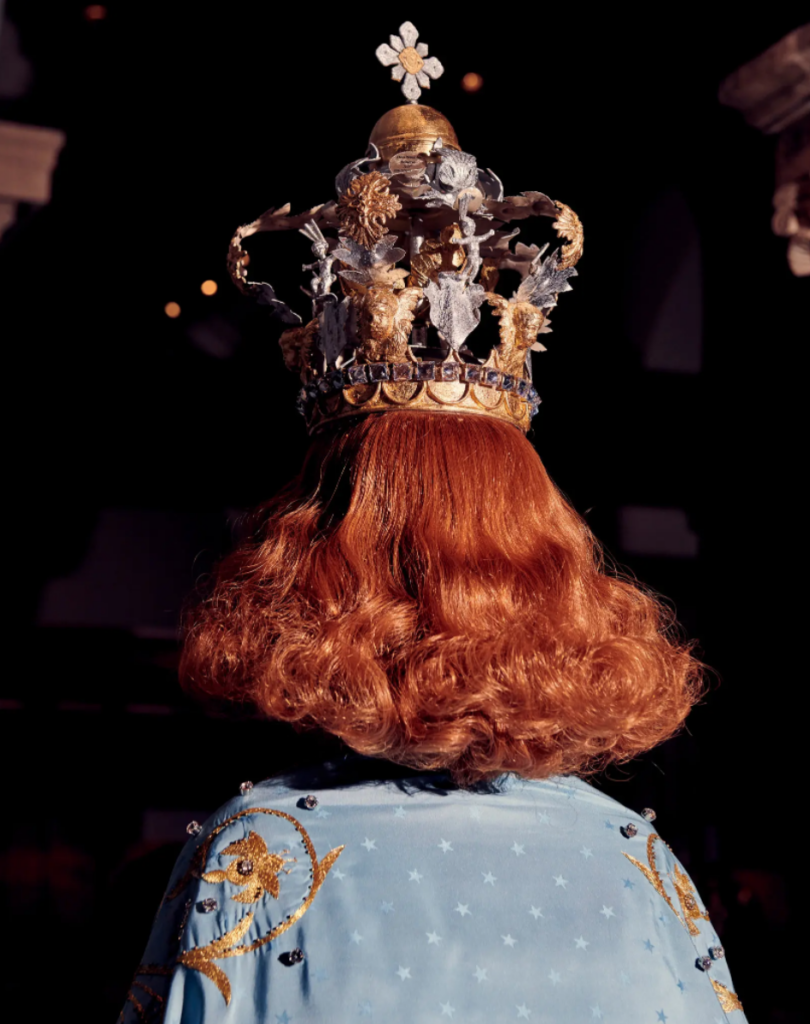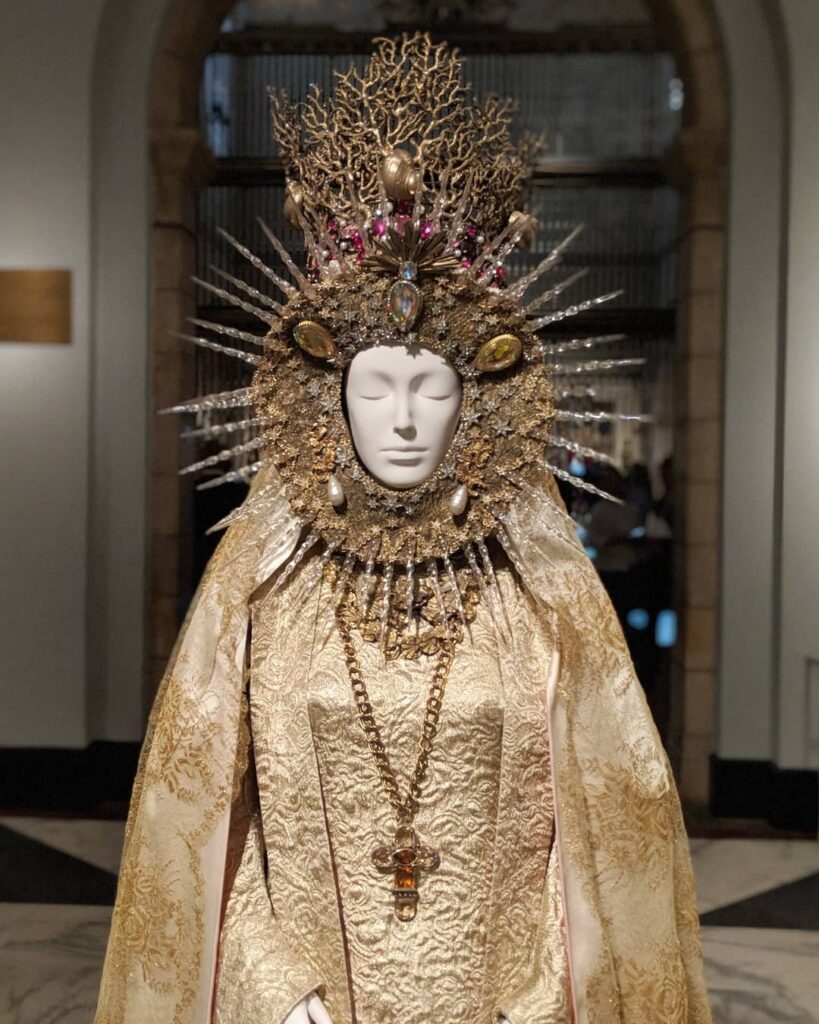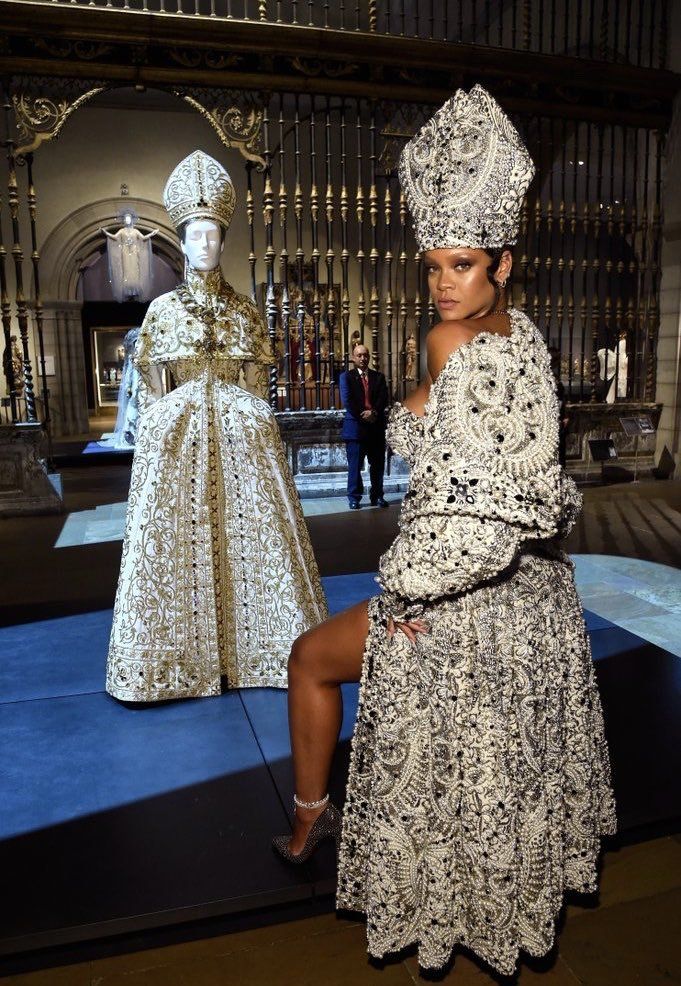
Heaven is a place on earth. Or at least it was in 2018 when the Metropolitan Costume Institute created its iconic Met Gala and costume exhibition theme of ‘Heavenly Bodies: Fashion and the Catholic Imagination’. The theme, birthed by the curator in chief of the Costume Institute Andrew Bolton, features an array of collections and exhibits that link the world of high fashion and high church. The Heavenly Bodies met gala theme showcases many aspects of the Catholic church’s power over luxury culture including its influence on the world of fashion. As someone who grew up in a religious environment and studies in a city that is deeply rooted in the Catholic religion, it is easy to see why designers may take inspiration from the themes and images used in Catholic artwork and design. Much of the artwork seen in Roman Catholicism uses luxurious imagery that emphasizes the church’s wealth and power. Many fashion designers (specifically luxury designers) have an ongoing relationship with Roman Catholicism which was showcased in this Met exhibition. When it comes to this Met Gala topic, the event can be interpreted by some as a commentary on celebrities and the importance we place in pop culture.

With the great power that the Catholic church possesses, comes an air of extravagance and pageantry. Catholicism uses enchanted and whimsical themes within its imagery that enhance its emphasis on wealth and luxury. Looking at Catholic artwork, especially those featured in cathedrals and churches, it’s easy to recognize that the church held great amounts of wealth and power in its most influential periods. The church and its many powerful patrons would commission artwork from the world’s most talented and famous architects, painters, and sculptors to create the religious artwork and cathedrals that we see today.
There is an almost endless plethora of religious artwork that has been inspired by the Roman Catholic religion and much of it is priced highly and precious in material. In the Catholic religion, having wealth meant that you could essentially buy yourself a way into heaven. You paid fees for weddings, funerals, and baptisms, and were expected to make regular donations to the church in order to show devotion. Having wealth essentially meant you were closer to God which only gave the church more power and influence.

In the many collections that this Met exhibit showcases, the marriage between couture and Catholicism are clear. Many designers and luxury collections have an ongoing relationship with the practices and imagery associated with the Catholic religion. The exhibition features a series of galleries that are inspired by the interiors of Byzantine churches as well as the Medieval and Lehman galleries in the museum including designs inspired by the holy order of the church. You can see the inspiration for the collections in the mosaic and fresco artwork of the Byzantine world in the collections as well as inspiration from the dress of various holy figures. Many of the designers featured in the galleries were raised in the Roman Catholic faith. The exhibit showcases how their designs are heavily influenced by the traditions of the Catholic faith.
The churches and holy places featured in the exhibition were made to feel like a sort of paradise. The exhibits read as a sort of conversation between the designer and religion as well as a telling of short stories about the Catholic religion.

Pieces from these collections come from iconic designers like John Galliano for Christian Dior, Kate and Laura Mulleavy for Rodarte, Dolce & Gabbana, Gianni Versace, Jeanne Lanvin, Yves Saint Laurent, and Thierry Mugler. The collections feature a selection of garments inspired by mosaics, the “earthly hierarchy” including pieces inspired by nuns and popes, as well as the “celestial hierarchy” focusing on angelic figures, a collection of “treasures” such as rosaries, stained glass, and other physical manifestations of faith. Other collections include garments inspired by the Madonna and an “ecclesiastical fashion show”.
When it comes to the Met Gala, it’s impossible to talk about fashion without referencing the major influences of pop culture on the event. The Heavenly Bodies Met Gala included a star-studded variety of celebrity guests wearing religiously inspired designer gowns, suits, and costumes.

Whether intentional or not, using celebrities to showcase this level of luxury and artistry feels like a commentary on pop culture and the amount of importance we place on public figures. In our current social media-based culture, celebrities have become something reminiscent of gods themselves. They are praised, written about, have large groups of followers, and live in a universe high above the rest of the world. Things like social media have created celebrities and public figures to be almost untouchable in ways that only gods had been before. While analyzing the intensity of the church, celebrities are the only ones who could truly push this message across with their level of relevance. In the same way that the church had all of the money and power when it was at its peak, celebrities have extreme amounts of power and wealth.
Each of the pieces chosen for this exhibit was hand-picked to showcase the religious influences of fashion. This Met theme portrays the many inspirations that the Catholic church poses to the artistic world of couture fashion. Overall the theme was a huge success and drew in a large audience of visitors in the several-month run and received high praise for its artistry and gorgeous visuals. This theme will go down as iconic in Met Costume Institute history.